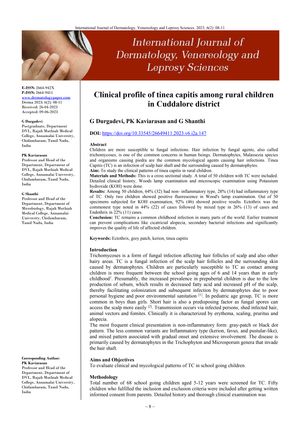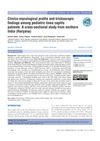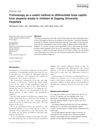Clinical Profile of Tinea Capitis Among Rural Children in Cuddalore District

TLDR Most rural children with scalp ringworm had a non-inflammatory type and early treatment is important to prevent complications.
In a cross-sectional study of 50 rural children with tinea capitis (TC) in Cuddalore district, 64% (32 children) presented with a non-inflammatory type of TC, while 28% (14 children) had an inflammatory type. Only 4% (2 children) showed positive fluorescence under Wood's lamp examination. Potassium hydroxide (KOH) examination confirmed TC in 92% (46 children) of the cases. The most common infection type was ectothrix, found in 44% (22 children), followed by mixed type in 26% (13 children), and endothrix in 22% (11 children). The study highlights that TC is a prevalent childhood infection and emphasizes the importance of early treatment to prevent complications such as cicatricial alopecia and secondary bacterial infections, which can improve the quality of life for affected children.

